¡Hóla amigos!
Wow! This trip to Chile has been so incredible! So far, I've visited the magical island of Chiloé where I saw houses on stilts. I've seen the beautiful capital city of Santiago, with its beautiful parks and fresh fish filled markets. I made a quick trip to Rapa Nui, also called Easter Island, and learned the story of the moai statues there. Then last week, I flew over the Atacama desert, the driest desert in the world with the most incredible star-gazing. I also visited the Lauca National Park with its 3,000 year old yareta plants and tasted delicious sweet and sticky cocadas. The honey in the cocadas were so yummy that I couldn't stop eating them and may have had one too many!!
Photo By Alex Proimos from Sydney, Australia (Chile's National Independence Day) [CC BY 2.0], via Wikimedia Commons
Chile Independence Day
This week, I stayed in Santiago to spend time with my new friends, Mateo and Sofia, and see the Chile Independence Day celebrations. You see, in about 1532, Spain began the long process of conquering many lands in South America and Central America, mostly by force. The conquistadors didn't have any respect for the Incan natives of Chile and didn't treat them as people. So when Chile finally declared independence from Spanish rule in 1810, it didn't come easily. There was a lot of violence while the Chileans tried to stand up to the Spanish so they could govern themselves. Eventually, in about 1826, they were successful, and since then they have celebrated September 18th as their independence. Chileans are very friendly, and like most people they like to smile, laugh, dance, eat, and spend time with loved ones and friends! When you meet a new person in Chile, don't be surprised if they greet you with a kiss on the cheek even!
Although I had begun my stay a few days before the actual Independence Day, the festivities had already started. Sometimes called el dieciocho because of the September 18th start date, the celebration can actually last over a week! Government offices and schools are closed, and even many businesses take the week off. Lots of kids were levantar valentinos, or flying kites! They like to play a lot of old countryside games there like tug-of-war, three-legged sack races, and catch-a-pig. I got a chance to play a pole-climbing contest and won, thanks to all my practice!
Many people were already setting up flags and balloons. Red, white, and blue were already starting to cover the city. With permission from their padre - that's father in Spanish here - Mateo and Sofia joined me on a day trip a city called Coquimbo, just a little north-west of Santiago, to visit their aunt - or tia - and see the Festival of La Pampilla.
Sector of La Pampilla in Coquimbo (where the festival takes place)-Photo By Soylalleina - Own work, [CC BY-SA 3.0],via Wikimedia Commons
The Festival of La Pampilla happens every year and represents the starting of the Independence struggle. The hills were already covered in decorated tents, ready for the celebrations to begin. Chileans like to celebrate with barbecues and parties in open spaces like parks, called fondas. They love to bring out the empanadas, savory pastries filled with tasty stuff like beef, onions and olives. There's choripanes, a grilled sausage served in a soft roll. And don't forget the anticuchos, grilled meat on skewers with pebre, a mix of chopped tomatoes, onions, cilantro, olive oil, salt and peppers.
For vegetarians in big cities, there's always fondas vegetarianas, or grilled vegetables. We left Coquimbo with enough time to get back to Santiago and visit O'Higgins Park just as the sun was going down. There, one of the biggest fondas are held every year, where hundreds of people celebrate with more barbeques and dancing. The national dance, the cueca, was one of the most common dances of the night. Mateo and Sofia, as it turns out, are very good dancers! (Photo By Eduardo Frei Ruiz Tagle (Flickr: ¡Celebramos el 18!) [CC BY 2.0], via Wikimedia Commons).
On the next day, September 19th, they celebrate the "Day of the Glories of the Army". In Santiago there was a big military parade, with lots of uniformed soldiers marching! They marched into O'Higgins park, went around it, then marched out the back. Even the president was there, waving to his people!
Photo By Osmar Valdebenito (originally posted to Flickr as Zapateao') [CC BY-SA 2.0], via Wikimedia Commons
In the Chilean culture, like in many cultures around the world, music plays a very important part of their cultural identity. Even today, music and dancing are part of the joyful culture of Chile's people. At the fonda in O'Higgins Park, I saw many great traditional dances. El Costillar is another fun one to watch, as two couples take turns dancing faster and faster around a bottle, and the first one to knock it over is out. That's a fun one, you should try it sometime!
Another popular dance, called the Pericona - the "parakeet" - is also sometimes called the bastonero, and is supposed to look similar to the way a rooster and a hen might dance. Some professional dancers will get dressed up to do it, with the man wearing boots and spurs and the woman wearing a big fancy dress. Both partners will have a handkerchief to use while dancing.
I feel so much energy, pride and love as I share in the festivities of Chile's Independence day with my new friends and their entire community. I wanted to share the video below by Marca Chile to give you a feeling of how it is to be here and celebrate this special day in Chile.
In the time before Chile was, well, Chile, the Incan tribes of South America had a strong musical culture. Their main instruments were percussion - like drums - or wind, like flutes and pipes, called antaras. After the Spanish invasion, instruments came to Chile from all over Europe, like the accordion from nearby German colonies, as well as the guitar, harp, tambourine, and xylophone. (Chilean Panpipes-Photo By© Andrew Dunn [CC BY-SA 1.0], via Wikimedia Commons).
One fun instrument I saw was a rain stick. In South America, it is made from a couple particular species of cactus that are hollow in the middle. They dry the the cactus out, then remove the spines and nail them back into it. After filling it, just a little bit, with seeds or pebbles, they seal the ends. When the stick is tilted back and forth, it sounds like rain and is very relaxing. Ancient cultures believed the rain stick would bring rain, which represented life.
Traditional Style Cactus Rainstick-Photo Below By Andy Brice (Own work) [Public domain], via Wikimedia Commons
Chilean Rain Stick Craft
Want to try and make your own Chilean rain stick at home or school? Just follow these simple steps and you can start playing your rain stick in no time!
Materials Needed
-
Long paper tube like a paper towel roll or wrapping paper roll
-
Tinfoil
-
Paper bag
-
Funnel (or you can make one with the remainder of the paper bag)
-
1/3 cup beans, rice or pebbles
-
Clear packing tape
-
Scissors
-
Markers or crayons
-
Glue
-
Feathers, jewel stickers, twine, ribbon washi tape or anything else you'd like to use to decorate
-
Begin with a long tube of some kind, like a paper towel roll or a leftover wrapping paper roll.
-
Make a tinfoil spiral, like the one in the picture, and slip it inside the your tube.
-
Cover the roll in the paper from a paper bag, with the plain side on the outside so you can decorate it when you're done. Let the paper extend far enough past the tube that you can fold it in and tape it to seal the ends. Only seal one end at this time.
-
Fill the rain stick with about a 1/3 of a cup (or more for longer tubes) of small beans, rice, pebbles, or tin foil balls. Experiment with different fillings to see which sound you like best.
-
Seal the other end of the tube like in step 3.
-
Decorate your rain stick with colorful designs of things you love!
And that's all! Tilt your rain stick back and forth to make the sounds of rain. If you would like to let me know how it works, you can ask your parent, guardian or teacher to send me a a message or a picture of your rain stick. I'd love to see how you decorated your rain stick and share a picture on my website!
What amazing fun! Come back next week when I visit southern Chile and spend some time in the forests there. I'll get a chance to write to you about how you can help Chile's forests. Until then, chao amigos!
-Joy Sun Bear

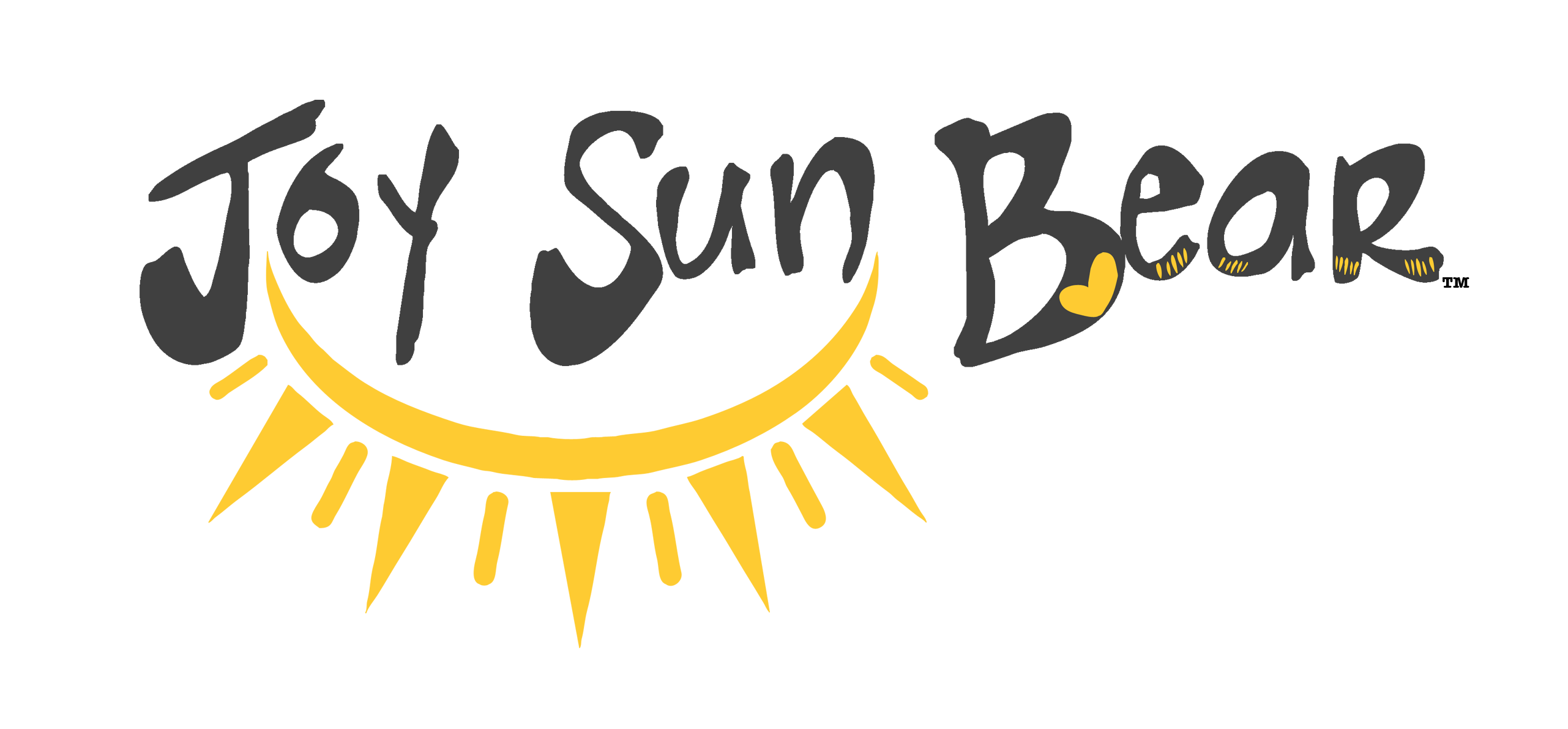






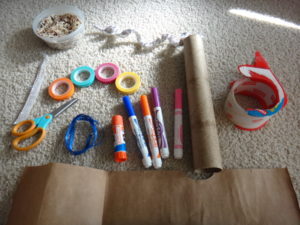





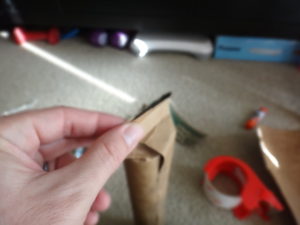
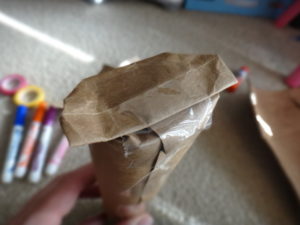

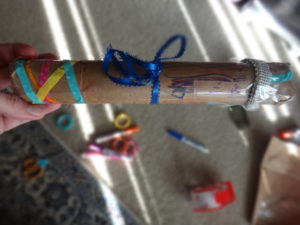
1 thought on “Chile Part Three – Celebrate Independence Day in Chile!”
Comments are closed.